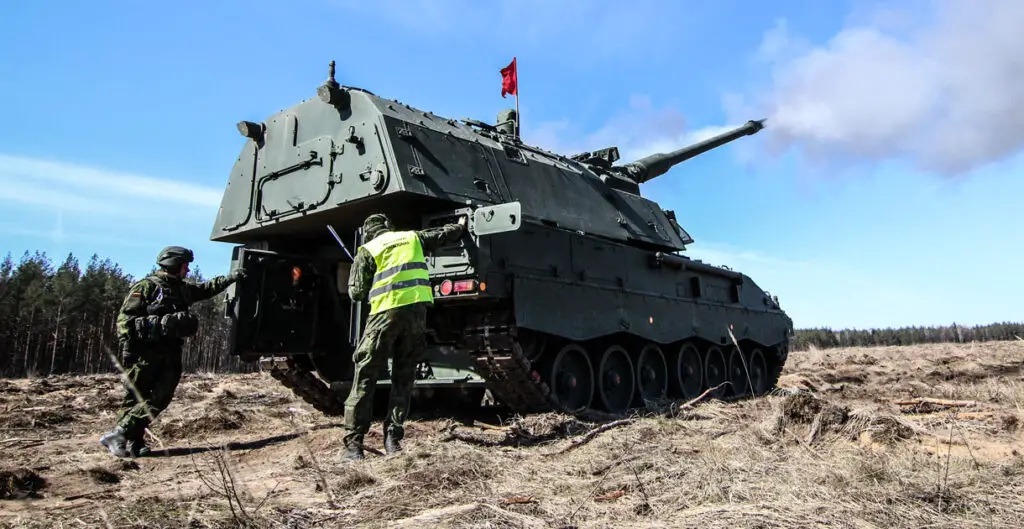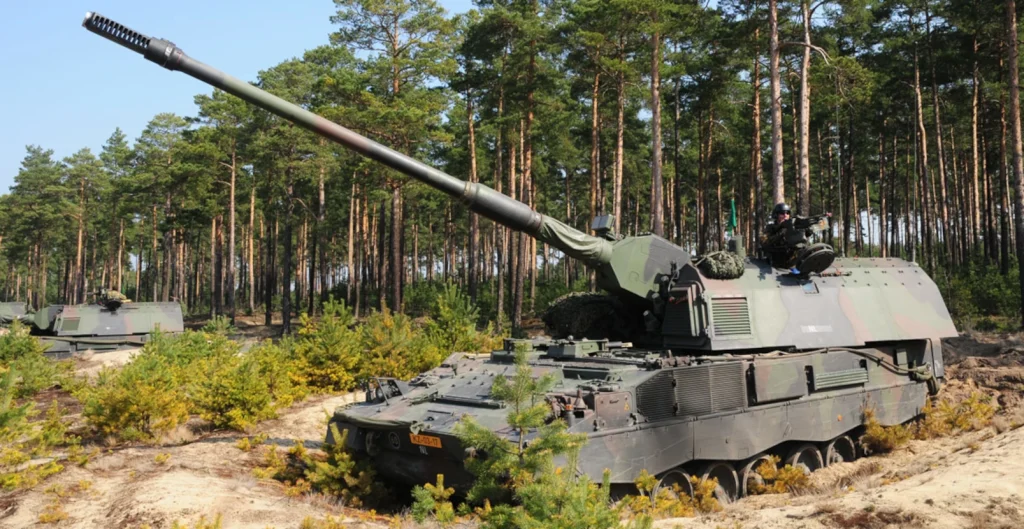Ukrainian troops have already lost one of the transferred German self-propelled howitzers. According to the German newspaper Bild, the PzH 2000 self-propelled gun-howitzer was hit by the Russians in the Donbas.
The German publication complained that Germany didn’t even hand over the entire batch of guns to Ukraine, and the Russian military had already knocked out a gun.
In addition, according to Bild, it was done with the help of a German grenade launcher, also supplied to the Ukrainian army, possibly referring to RGW 90 man-portable, anti-armour, multi-purpose weapon system ‘Matador’ or Panzerfaust. The knocked-out howitzer, called one of the most “expensive and high-tech” self-propelled guns in the world is allegedly already being studied by the Russian military.

Chancellor Olaf Scholz wants to double the military budget. But Germany is not at war with anyone, and the Germans are paying for weapons for Ukraine, ending with the Russians. (…) Germany is losing money and technology (…) How much more will you have to pay for Ukraine? What will be the price for the Germans? – asks the publication.
On June 23, Minister of Defense of Ukraine Reznikov announced that Ukraine received a batch of 155-mm German self-propelled artillery guns PzH 2000. In total, Kyiv received 12 installations, seven of which were supplied by Germany and five more by the Netherlands. In addition, the Germans prepared Ukrainian crews for handling the guns. The training was conducted on the territory of Germany. The deliveries of the PzH 2000 have not been completed at this point, and the Germans have announced the transfer of an additional batch of howitzers to Kyiv.
Previously, the French had complained that the Russians had captured two Caesar self-propelled guns.
PzH 2000 self-propelled gun-howitzer
The PzH 2000 self-propelled gun-howitzer is a 155 mm gun on a tracked chassis based on the Leopard-2 tank.
After the trilateral SP 70 project was phased out in 1986, Krauss-Mafei Wegmann (KMW) and its main subcontractor, Rheinmetall Landsistem, began development of the 155 mm Panzerhaubitze 2000 self-propelled howitzer. By the end of 2002, the PzH 2000 howitzer was ordered for the armed forces of Germany, Greece, Italy and the Netherlands.
The PzH 2000 howitzer is armed with a new L/52 barrel compatible with all projectiles and propellants used in NATO today. The effective fire range for conventional ammunition is 30 to 36 km. For active-reactive projectile, the range is up to 67 km. A typical representative of the latter is the Rheinmetall Rh 40 DM 131 round with a DM 92 modular propelling charge. The electric actuators provide vertical aiming of the gun from 2.5′ to +65′ and turret rotation by 360′. To ensure accurate aiming of the gun on the march at high speeds, the PzH 2000 has a navigation system based on 6a3eGPS. Thanks to an onboard electronic ballistic computer with the ability to receive target designation from a fire control point via a radio channel, the gun can perform a combat mission autonomously without engaging in a prepared fire position, i.e. immediately after receiving data on the target and the type of ammunition used.

The aiming of the gun is automatically checked and corrected after each shot based on the data of the ballistic computer. The howitzers can conduct simultaneous salvo fire in the modes of MRSI (multiple round simultaneous impact). During tests, the PzH 2000 fired in MRSI mode with five shots at a target at a distance of 17 km.
The automatic loader operates in automatic loading mode, semi-automatic modes, and emergency manual mode. It allows the user to maintain a rate of fire of 10 rounds per minute (when testing an improved automatic loader, the rate was increased to 12 rounds per minute). The rate of fire of three rounds per minute is maintained until the ammunition is completely depleted. The ammunition rack in the central part of the hull is designed for 60 shells and 288 modular propellant charges (or equivalent conventional charges).
With a standard crew of 5, the howitzer is fully capable of performing missions with a crew of 3. The defensive armament of the PzH 2000 consists of a 7.62 anti-aircraft machine gun. The PzH 2000 howitzer was tested in Switzerland as a coastal artillery gun. During the tests, the gun successfully hit moving sea targets.
The combat weight is about 55.3 tons. On the highway, it can travel at a speed of 67 km/ph, and on cross-country, the speed is about 45 km/ph. On the highway, it has a range of 420 km without refuelling.
